To compete globally, Europe’s seafood farmers may get boost from AI research
Underwater drones adapted to cold Nordic waters, and sensors that listen to the sounds of fish eating. These are some of the AI solutions that could give European sea farmers a boost to compete globally. Researcher Fredrik Gröndahl explains how maching learning is being developed take on operational challenges and reduce costs in aquaculture, particularly in inaccessible waters far offshore.
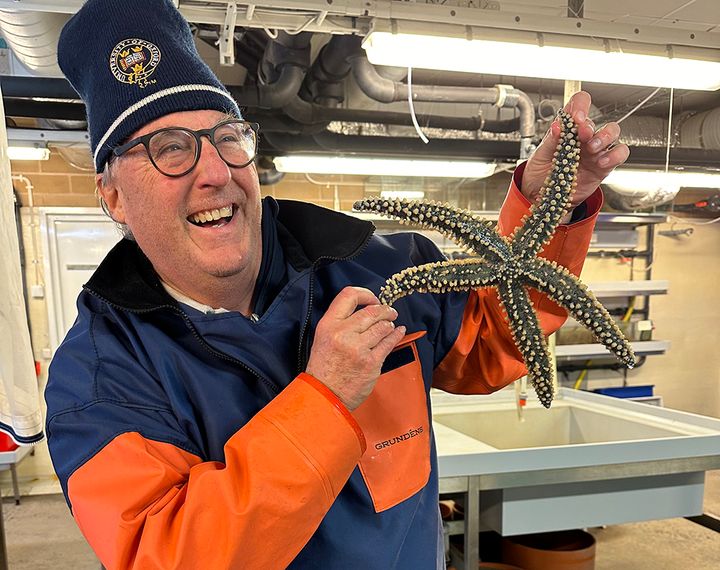
In the global seafood market, European aquaculture could expect a boost from AI solutions developed by researchers at KTH Royal Institute of Technology in Stockholm.
At the Blue Food research centre KTH researcher Fredrik Gröndahl oversees several projects that harness machine learning to take on operational challenges and reduce costs in aquaculture, particularly in inaccessible waters far offshore.
Seafood farmers incur high costs in hiring the vessels and divers needed to access seaweed beds, which are increasingly being located farther from shore in order to avoid conflict with other coastline uses and property rights.
So researchers at KTH have been working on substituting boats and divers with underwater drones (autonomous underwater vehicles) that are to be optimized for the colder Nordic waters. These vessels, which are under development at the Swedish Maritime Robotics Centre at KTH, are equipped with sonar and algorithms to detect the submerged ropes that seaweeds grow on. Enabled by artificial intelligence they are meant to navigate along these lines, well out of view of their human operators on land.
Savings for fish farmers
AI is also being adapted to fish farming. In the oyster beds of Sweden’s west coast, the Skagerrak strait, Blue Food researchers are testing algorithms intended to identify invasive species of oysters from those approved for cultivation in the EU.
The research attracts investment because it offers a realistic way to level the playing field in competition with large-scale sea farming, particularly in China, he says.
“I visited a giant seaweed farm in China that had 1,000 hectares of seaweed alone, plus mussels and other fish,” Gröndahl says. “They were very labour intensive, with the work being done mostly by hand. We could never do that in Sweden.
“Labour in Europe is expensive so we have to have machines and automated, optimized systems to be competitive to produce food,” he says.
Machine learning is also being developed to avoid wasting fish feed in enclosed pens. With the help of submerged microphones, the researchers are testing an automated feeding system that listens for the sounds of fish eating. When the sounds subside, the release of feed is shut off. “This can save a huge amount of money for fish farmers, on land or in the sea,” he says.
“You can optimize the feeding so the fish get exactly what they need. Otherwise, if the fish are full the excess feed will sink to the bottom and then we have a problem,” Gröndahl says.
On land, AI also can be used for balance and control of water quality to prevent anoxic death of fish being raised in enclosed systems.
Synergies with energy sector
The work also enables synergies with the energy sector, where interest is growing in combining offshore wind parks with seaweed farming. In these kinds of scenarios, sea drones can also be used for more continuous monitoring of windmill and wave energy, which take a beating in the harsh conditions of the ocean.
“We are trying to find ways to be more and more competitive,” he says. “Around Europe, whenever we present this underwater robot collaboration, people get very enthusiastic.”
Contacts
Fredrik GröndahlBlue Food Seafood CentreKTH Royal Institute of Technology
Fredrik Gröndahl is the Director of the Blue Food Seafood Centre and a researcher at KTH Royal Institute of Technology in Stockholm, Sweden.
Images
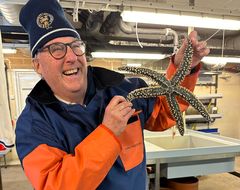
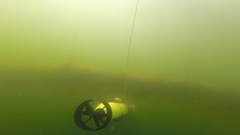
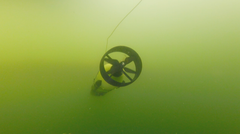
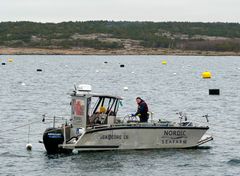
Subscribe to releases from KTH Royal Institute of Technology
Subscribe to all the latest releases from KTH Royal Institute of Technology by registering your e-mail address below. You can unsubscribe at any time.
Latest releases from KTH Royal Institute of Technology
Study explains why new kinds of steel needed to build lead cooled reactors11.12.2025 14:23:59 CET | Press Release
Safer operation, better fuel efficiency and lower waste mark lead-cooled nuclear power as a potentially dramatic shift from the water-cooled nuclear stations the world has relied on since the mid 20th century. A recent Swedish study casts new light on how to avoid corrosion in the steel used to build these next-generation nuclear facilities.
Alternative to BPA passes toxicity and sustainability standards set by EU innovation guidelines4.12.2025 11:07:37 CET | Press Release
Polyester and a host of other plastic products could potentially be manufactured with non-toxic and sustainable BPA alternatives identified in a multidisciplinary study published today by researchers in Sweden.
Study shows potential for more affordable and efficient hydrogen gas production3.12.2025 15:29:35 CET | Press Release
A recent advance in the science of hydrogen fuel production could enable higher output and more sustainable production of this renewable energy source, researchers with Stockholm’s KTH Royal Institute of Technology report.
Calcium-sensitive switch designed to boost efficacy of cancer drugs24.11.2025 21:11:53 CET | Press Release
Cancer-fighting antibody drugs are designed to penetrate tumor cells and release a lethal payload deep within, but too often they don’t make it that far. A new study shows how this Trojan Horse strategy works better by exploiting calcium differences outside and inside cells.
Potential treatment may prevent brain damage in premature babies11.11.2025 11:10:46 CET | Press Release
A treatment that could protect premature babies from brain damage showed promise in a recent study in Sweden. Using a first-of-its-kind prenatal brain model created with human cells, researchers observed new details about the effects of cerebral hemorrhages on stem cells during premature birth. And they successfully tested an antidote that reduced the damage.
In our pressroom you can read all our latest releases, find our press contacts, images, documents and other relevant information about us.
Visit our pressroom